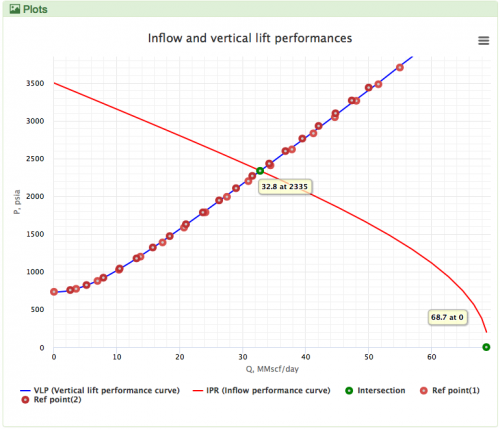Difference between revisions of "Fanning correlation"
From wiki.pengtools.com
| Line 2: | Line 2: | ||
== Brief == | == Brief == | ||
| − | The [[Fanning correlation]] is the name used to refer to the calculation of the hydrostatic pressure difference and the friction pressure loss for the dry gas. | + | The [[Fanning correlation]] is the name used to refer to the calculation of the hydrostatic pressure difference and the friction pressure loss for the dry gas flow. |
[[Fanning correlation]] is the default [[VLP]] correlation for the '''dry gas wells''' in the [[PQplot]]. | [[Fanning correlation]] is the default [[VLP]] correlation for the '''dry gas wells''' in the [[PQplot]]. | ||
| Line 101: | Line 101: | ||
|titlemode= replace | |titlemode= replace | ||
|keywords=Fanning correlation | |keywords=Fanning correlation | ||
| − | |description=Fanning correlation is the name used to refer to the calculation of the hydrostatic pressure difference and the friction pressure loss for the dry gas. | + | |description=Fanning correlation is the name used to refer to the calculation of the hydrostatic pressure difference and the friction pressure loss for the dry gas flow. |
}} | }} | ||
Latest revision as of 09:45, 6 December 2018
Contents
Brief
The Fanning correlation is the name used to refer to the calculation of the hydrostatic pressure difference and the friction pressure loss for the dry gas flow.
Fanning correlation is the default VLP correlation for the dry gas wells in the PQplot.
Math & Physics
Following the law of conservation of energy the basic steady state flow equation is:
Colebrook–White [1] equation for the Darcy's friction factor:
Reynolds number:
Discussion
Why Fanning correlation ?
Fanning correlation actually is not a correlation, it's the fully explicit workflow to define the pressure drop.— www.pengtools.com
Nomenclature
 = depth, ft
= depth, ft = friction factor, dimensionless
= friction factor, dimensionless = pressure, psia
= pressure, psia = Reynolds number, dimensionless
= Reynolds number, dimensionless = specific gravity, dimensionless
= specific gravity, dimensionless = temperature, °R or °K, follow the subscript
= temperature, °R or °K, follow the subscript = velocity, ft/sec
= velocity, ft/sec = gas compressibility factor, dimensionless
= gas compressibility factor, dimensionless
Greek symbols
 = absolute roughness, ft
= absolute roughness, ft = viscosity, cp
= viscosity, cp = density, lbm/ft3
= density, lbm/ft3
Subscripts
g = gas
K = °K
L = liquid
R = °R
SG = superficial gas
References
- ↑ Colebrook, C. F. (1938–1939). "Turbulent Flow in Pipes, With Particular Reference to the Transition Region Between the Smooth and Rough Pipe Laws"
 . Journal of the Institution of Civil Engineers. London, England. 11: 133–156.
. Journal of the Institution of Civil Engineers. London, England. 11: 133–156.
- ↑ Moody, L. F. (1944). "Friction factors for pipe flow"
 . Transactions of the ASME. 66 (8): 671–684.
. Transactions of the ASME. 66 (8): 671–684.
- ↑ Lyons, W.C. (1996). Standard handbook of petroleum and natural gas engineering. 2. Houston, TX: Gulf Professional Publishing. ISBN 0-88415-643-5.






